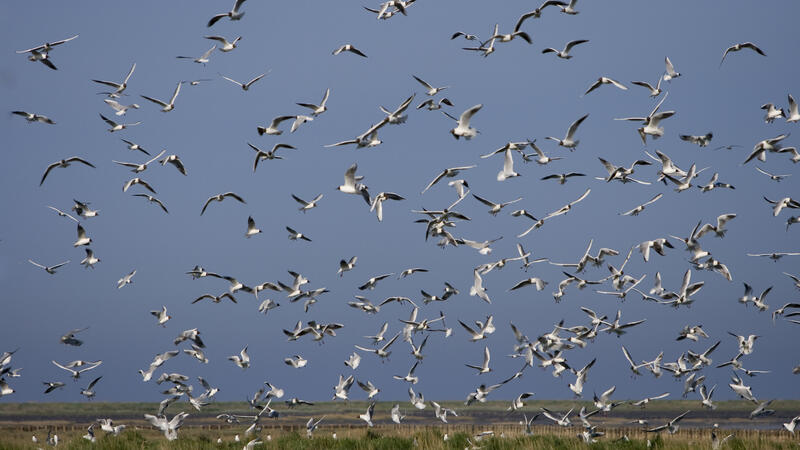World Migratory Bird Day highlights vital connection between birds and insects

This year World Migratory Bird Day focuses on the intricate relationship between birds and insects. Amidst the vast landscape of the Wadden Sea, migratory birds find refuge and food to sustain them during their arduous journeys. Insects often play a central role in the diet of many songbirds, but also waterbirds rely on this rich source of protein. One example of this is observed on the German island of Mellum, where black-headed gulls feed on ants during their nuptial flights. These adaptable gulls have discovered ants as an additional source of nutrition amidst the mudflats of the Wadden Sea. Feeding on ants supplements their diet and exemplifies the complex food web interactions that define this dynamic ecosystem.
The connection between birds and insects goes beyond supplementary feeding; it is a symbiotic relationship that underscores the importance of preserving the biodiversity in the Wadden Sea and beyond. Curlew, Dunlin, Redshank and Black-tailed Godwit all also feed on invertebrates during the time they spend in the Wadden Sea. “As we strive to protect migratory birds and other charismatic species, we must recognise the essential role that insects play in this ecosystem and for the survival of many species in the food web”, says Kristine Meise, Programme Officer Flyway and Biodiversity at the Common Wadden Sea Secretariat. “We must acknowledge that the relationship between birds and insects is increasingly threatened by human activities such as habitat destruction, and the use of pesticides, and climate change is further exaggerating their impact on insect populations.”
Therefore, World Migratory Bird Day is also a cry for stronger conservation efforts in the Wadden Sea and beyond. “By raising awareness and promoting stewardship of this unique habitat, we can all contribute to a brighter future for migratory birds and the species that rely on the richness of the Wadden Sea” Meise adds.
